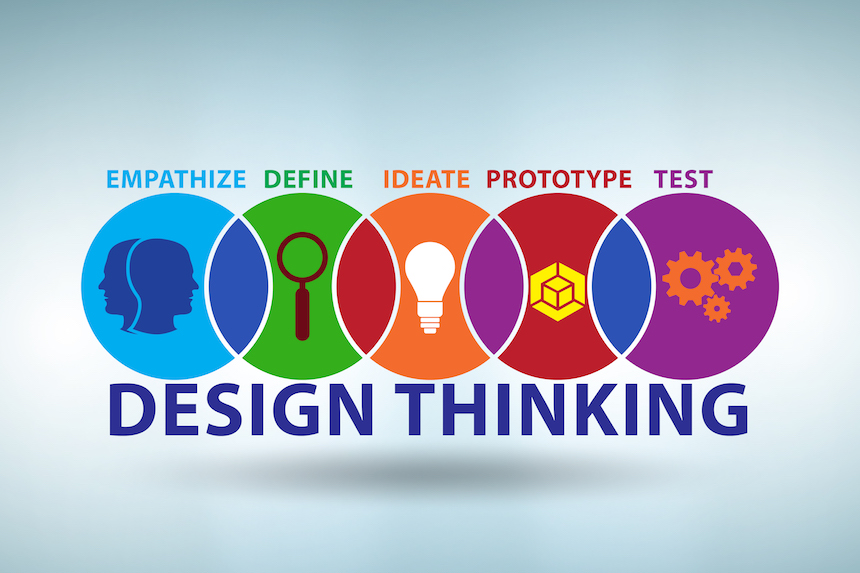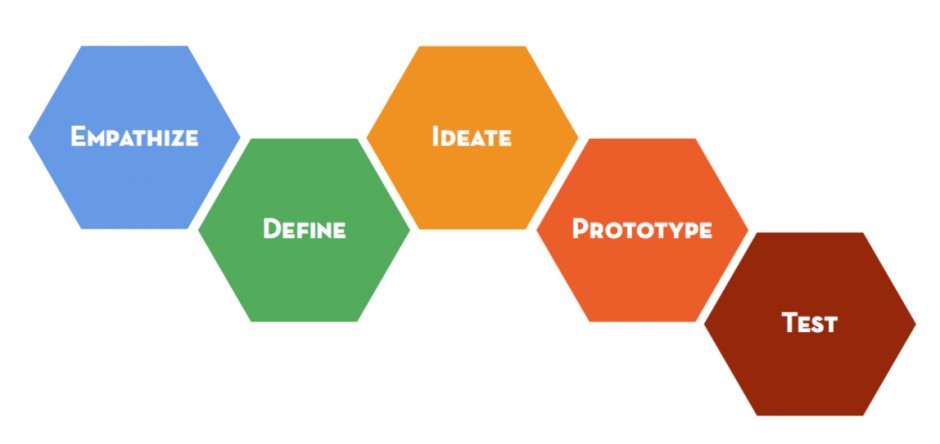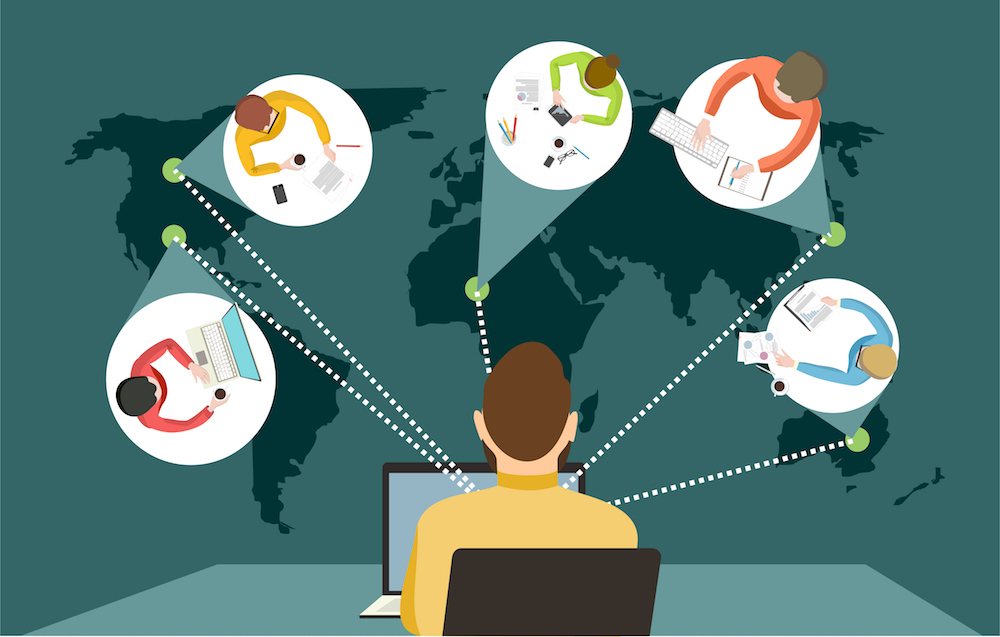Top activities, tools, articles, videos, guides, and more related to design thinking workshops
This design thinking workshop program guide contains links to my recommended resources for design thinking we’ve researched over the years that influence our design thinking training workshops. Many are PDF guides you can use to help with the design thinking process and projects. These are the resources recommended in conjunction with our design thinking workshops that train people on the design thinking process and mindset through working on a real challenge with activities and exercises.
Design Thinking Workshop Agenda
An agenda for a design thinking workshop could be created and organized based on the stages or steps of the design thinking process for whatever model or framework you choose to use. If you are using the Stanford D School framework you could organize your agenda in the sequence listed below. Each stage would have design thinking activities that could be done by participants.
- Empathize
- Define
- Ideate
- Prototype
- Test
In this guide we will share toolkits and resources for activities you could use to facilitate people through the design thinking workshop agenda based on the respective framework you utilize.
Design Thinking Toolkits and Guides

Design Thinking Mindsets for Human-Centered Design
Learn the 5 or 6 specific design thinking mindsets from sources like the Stanford d.school and IDEO. We love to help people try these mindsets on during our innovation workshops as they begin with empathy to use the design thinking framework on a real challenge.
How to Create Scenarios for Design Thinking
Scenarios allow you to connect the dots with your customers and find patterns that will help you gain insights into their habits, beliefs, desires, and behavior. Learn 5 strategies you can use to create and implement scenarios for design thinking and innovation at your company.
How to Create Personas for Design Thinking
A persona is a fictional character that represents a type of customer or user of your service or product. This approach is research-based and designed to help you better understand your customers’ needs, behaviors, experiences, and goals.
Stanford D School Bootcamp Bootleg
This Stanford program, which works off of the belief that giving people creative confidence changes how they think about themselves and their ability to have impact in the world, draws on various methods from across the field of design to create learning experiences to unlock creative potential and apply it to the world.
“Design can be applied to all kinds of problems. But, just like humans, problems are often messy and complex—and need to be tackled with some serious creative thinking. That’s where our approach comes in.”
Radical collaboration. Real-world projects. Unbounded problems. 100% opt-in culture.
Ideo’s Human Centered Design Kit
Ideo is “a global design company committed to creating positive impact” and its Design Kit includes 57 design methods, key mindsets and a full slate of worksheets on design’s potential to change lives.
According to Ideo, designing solutions for people first is a key tenet of design thinking.
“Design thinking is a human-centered approach to innovation that draws from the designer’s toolkit to integrate the needs of people, the possibilities of technology, and the requirements for business success.” —Tim Brown, President and CEO of IDEO
Google Design Sprint Kit
Created in 2010, Google’s design sprint is a five-phase framework used to “answer critical business questions through rapid prototyping and user testing.” A combination of both divergent and convergent thinking, the design sprint framework process helps spark innovation, encourage user-centered thinking, align team member vision, and achieve product launch faster.
“The value of a sprint comes from bringing together a cross-functional team of people, product managers, ux designers, engineers and researchers, those who will be the primary owners of the ideas generated in the sprint and working on the product moving forward.”
Circular Design Guide
Many of today’s companies are “rooted in a linear approach to growth – make, use, dispose,” but this is a guide to a growing mindset among businesses that strives to design solutions for the circular economy. Patagonia, which has grown their business out of a repair and refurbish service in conjunction with authentic and compelling storytelling, serves as the most prominent and successful example of the circular design approach.
“The design thinking approach that underpins this guide allows you to explore new ways to create sustainable, resilient, long-lasting value in the circular economy – giving you the creative confidence to redesign the world around you.”
Empathy Training
In this guide, we’ll cover what empathy for design thinking means as well as how to learn empathy to apply to your innovation- and design thinking-focused projects.
Design Thinking Metrics and KPIs
In this article, we take a look at creating simple design thinking metrics or KPIs that may be applied to your scenario. Measuring things along a funnel or stage process can help you align your goals with organizational-wide outcomes.
Design Thinking Program Articles

Top Design Thinking Books to Read
These books can help you whether you are getting started with understanding what design thinking is or if you are developing your own design thinking training or leading a culture of innovation.
Forbes Design Thinking Articles
Here we have shared the links to some of our favorite Forbes design thinking resources that we recommend reviewing to help improve your own innovation practices.
IDEO Design Thinking Articles
These IDEO design thinking and innovation tools can help you develop the skills needed to evolve successfully. The IDEO Inspiration – Ideation – Implementation model is a simple one to understand.
McKinsey & Company Design Thinking Articles
Another important industry leader, McKinsey & Company is a global management consulting firm that aids companies to improve their performance and reach their ultimate business goals. Their website has many design thinking tools, articles, and other resources that you can access and use in your own work.
Stanford Design Thinking Articles
One of the leading design thinking sources we follow is the Stanford d.school. Their website contains useful information and special tools that can be used throughout the design thinking process, from ideation and brainstorming to collaboration and prototyping.
Harvard Business Review Design Thinking Articles
One of our favorite (and most credible) sources of commentary, news and information about design thinking and innovation comes from Harvard Business Review. Today we’re sharing some of the best Harvard Business Review design thinking articles we have found.
Design Thinking TED Talks
One way to learn about design thinking – and how you can apply it to your own organization – is through watching videos from innovation professionals. Here we have laid out top design thinking TED Talks to aid in your organization’s innovation efforts.
Design Thinking Quotes
This post is a round-up of design thinking inspired quotes that can spark creativity, innovation, and new ways of thinking.
Design Thinking Conferences Around the World
One of the best ways to connect with others about this trending design thinking approach is at a conference where designers, innovators, executives, and business leaders discuss its impact and methodologies.
Stanford D School Design Thinking Crash Course Workshop Video
Stanford Design School shares their “crash course in design thinking” to be used by those seeking to learn the design thinking process. It’s a compact and fast-paced 90 minute workshop with an overview of how the design thinking process is facilitated with activities. I use and recommend this workshop which also comes with worksheets for participants to use and they design an experience for a partner step-by-step.
This is a great series of activities in a workshop to lead with groups to engage them in learning the design thinking process by doing it for and with a partner to design for. You can also read about the steps to design thinking in practice based on the Stanford d.School model.
10 Design Thinking Activities from the book Creative Confidence
This is collection of classic design thinking workshop activities from IDEO partners and authors Tom and David Kelley. There are some favorites in here for experience or even new facilitators to run such as the Wallet Exercise, Customer Journey Map, Empathy Maps, and the Dream/Gripe Session. They also have good general activities here for getting into the design thinking frame of mind or starting out on the best foot forward in your session with activities such as speed dating, nicknaming and mindmapping.
How to Run a Successful Design Thinking Workshop from SalesForce
Rule number one: skip the Powerpoint presentations.
“In a world dominated by email and one-hour meetings, in-person workshops can seem like a significant commitment of time. But workshops, with their social energy, engaging dynamic and intense focus, can ignite a team’s progress on their project.”
Because collaboration is integral to design thinking. this guide walks you through how to design and run a workshop that is not only engaging, but can help accelerate any project.
Design Thinking Resources Collection from IBM
This collection on design thinking recommends observing work in your users’ natural context, reflecting on ideas and projects as a team and facilitating collaborative activities and ensuring everyone has a chance to be heard
“Conditions in the real world can be unpredictable. Have a plan, but be ready to improvise as conditions change and opportunities arise. Whatever you do, take in what you observe without judgement…team activities help align your team on a common understanding of who you are, what you know, and where you want to go.”
A collection of Design Thinking Videos (Speeches, TedTalks, University Lectures, Webinars, etc.)
Our Design Thinking Training Workshops for Organizations
Get started with design thinking! Learn the basics in our design thinking training workshop, and start on your own innovation project step-by-step. Create and validate an innovation for and with your clients, customers or users. Use some of the most effective tools and techniques to design your concepts.
How to use Design Thinking to Design an Innovation Lab
In a broad sense, an innovation lab is a physical space dedicated to the creation, development, and execution of ideas. It’s a space to cultivate, share, and grow not only potential earning opportunities, but also relationships within an organization.
Design Thinking Social Media Groups

Top Design Thinking LinkedIn Groups to Join
LinkedIn Groups in particular provide a space for conversation and collaboration around specific topics and industries of interest. In this post we cover top design thinking LinkedIn Groups you can join to better improve your innovation and design thinking efforts.
Design Thinking Facebook Groups
Facebook Groups is a great tool at your disposal to hear from industry leaders and stay current on trends and changes impacting your business. If you are interested in innovation and design thinking for your business, here are four top design thinking Facebook groups to explore.
Virtual Design Thinking Resources

How to Run a Virtual Design Thinking Project with Remote Teams
There’s no question that teams are capable of great things when working remotely, and there is no shortage of project management tools, virtual whiteboards and prototyping software out there to help. However, getting remote working right when the problem the team is trying to solve calls for a design thinking approach brings its own set of challenges.
5 Advantages of Remote Design Thinking
Rather than trying to replicate face-to-face experiences online, we focus on those things that are only possible in virtual environments. We’ve found that with the right approach and with the right tools, teams working remotely can produce more robust, actionable solutions in less time than many of their face-to-face counterparts.
Design Thinking Software Tools
Now there are software tools and applications that will guide you through a design thinking project. These tools are also helpful for running a project remotely or virtually with a team. Miro and Sprintbase are examples of tools that do this.
Design Thinking Virtual Workshops
Learn to become a more expert design thinking facilitator who can design your own onsite or virtual design thinking workshop. Apply a design thinking process and more human centered design for a variety of challenges. Make a design thinking session your design challenge. Put a design thinking methodology to use to create your own activities. Use journey mapping, empathy maps, problem statements, divergent thinking, idea generation methods, and rapid prototyping to create innovative solutions for your workshop participants or stakeholders. Dive into creative problem solving as an innovation process for your DT workshop.
Are you interested in learning more about design thinking workshops? We offer bootcamps, training, and even a train-the-trainer certificate program for design thinking facilitators. Reach out to us to learn more.
We are curious. What do you think are some of the best design thinking activities? What are some of your favorite resources, books, tools, or techniques for design thinking workshops or human-centered design training? Are their certain design thinking exercises that get great results for you?
